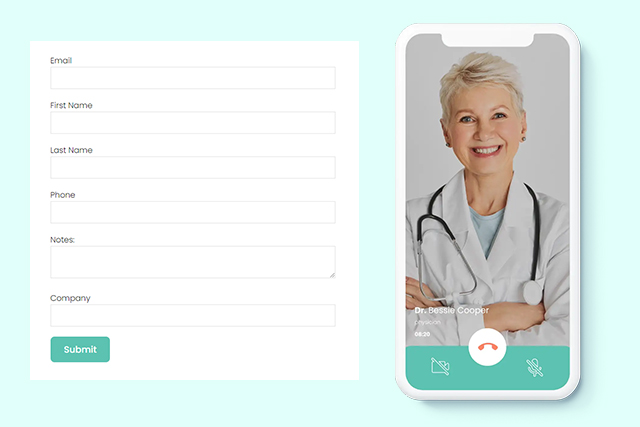Your practice can save hundreds of dollars per patient just by utilizing the right electronic health record (EHR) software.
A study published in The American Journal of Managed Care found that patients treated in hospitals with advanced EHRs costs, on average, $731 less than patients admitted without EHR software. The study looked at 5 million individuals treated at 550 hospitals across the United States.
Here are 3 ways the right EHR software can boost profitability for your practice:
Your staff spends less time and energy on paperwork, making the practice more efficient

It’s safe to say healthcare workers need to reserve as much time and energy as possible. Your patients deserve the best, most-organized version of you and your staff. If you’re spending a significant amount of time maintaining consistent paper records and tracking down your documents, you’re losing time with your patients. Reducing paperwork is also a benefit of switching to a telehealth practice vs. in-person clinical work, where much of your administrative staff can work remotely.
Urban Health Plan in New York rolled out EHRs in 2006. Six years after implementation, they eliminated all paper charts, including 75 lost paper charts per month. Lost charts required the attention of 0.6 full-time employees each month and cost Urban Health Plan approximately $21,000 every single year. More than half of the equivalent of a full-time employee was spent chasing lost charts!
EHRs can also alert your practice about things like overdue physicals and diabetes patients who need to obtain lab work. This encourages a better follow-up protocol to ensure patients are receiving necessary medical care on time. Even the most diligent practices can benefit from extra reminders about patient care.
It will also enable your patients to receive reminders, too, reducing the number of missed appointments. Missed appointments cost the healthcare industry an average of $150 billion, and each physician loses an average of $200 per missed time slot.
Additionally, your staff spends less time shuffling paperwork between you and your patient or you and another physician with digital records. EHRs enable your patient to obtain their own health records at any time and play an active role in their healthcare. It also allows them to quickly access lab records, request prescription refills, and visit a secure patient portal.
Malpractice claims are lowered after implementing EHRs
A 2012 study published by researchers at Harvard University found EHRs reduced malpractice claims by approximately one-sixth of their previous rate. Just two out of 51 malpractice claims filed during the time of research occurred after implementing an EHR.
The average expense incurred on a medical liability claim that closed in 2015 was $54,165, according to the American Medical Association. Nearly 70% of all closed claims were dropped, dismissed, or withdrawn in 2015. However, that doesn’t come without cost. Each claim cost an average of $30,475 to defend.
The right EHR software doesn’t require an additional job role to maintain, it’s intuitive and your existing staff can be trained on how to use it. Reducing your chance of incurring medical malpractice costs by one-sixth, without consulting an attorney or hiring another employee, is a no-brainer.
Medical malpractice lawsuits are not uncommon and with COVID-19’s restrictions delaying routine medical appointments, we could see a surge in lawsuits after the pandemic is over. A December 2020 study from the National Cancer Institute (NCI) found decreases of up to 85% in cancer screenings during the pandemic. This could result in thousands of additional cancer deaths due to a delayed diagnosis.
Maintaining your EHRs ensures you’re ready to defend your practice in the event of a medical malpractice lawsuit against you.
EHRs help you retain patients

Losing patients isn’t cheap. Research tells us increasing your patient retention rates by only 5% can boost profits by as much as 85%. According to this research, the middle of the normal patient attrition range is 20% and the retention rate 80%.
Using this number, a practice with 1,000 patients, on average, would see 200 patients leave within any given year. Attaching an average $1,000 lifetime patient value, which will heavily depend on factors like your practice type, yields $200,000 in lost annual revenue for this practice.
Millennials are now the largest audience group in healthcare. Unlike Baby Boomers, Millennials are not attached to a doctor or healthcare provider. This demographic will switch healthcare providers due to poor service and administrative teams, not just poor clinical practice.
While your patient shouldn’t be viewed like a retail customer, enhancing the user experience will ensure your patients feel welcome and cared for. In fact, this demographic often does want an experience resembling that of a retail store or restaurant, meaning high-quality care and service. Millennials cite frequently waiting long periods of time for an appointment and waiting in the office to be seen as a primary reason for switching healthcare providers, including issues with office staff and doctors disrespecting their time.
Unnecessarily wasting your patient’s time is unacceptable in the modern world of healthcare, especially with digital resources like EHRs to help you. Utilizing an EHR ensures your practice and administrative staff are organized and have immediate access to the details about every patient.
Finding The Right EHR

Heally’s telehealth software for alternative medical clinics includes comprehensive EHRs and AI-powered charting. To schedule a demo for your practice, fill out our short intake form and we’ll be in touch soon.

Book Free Consultation
Book Free Consultation
